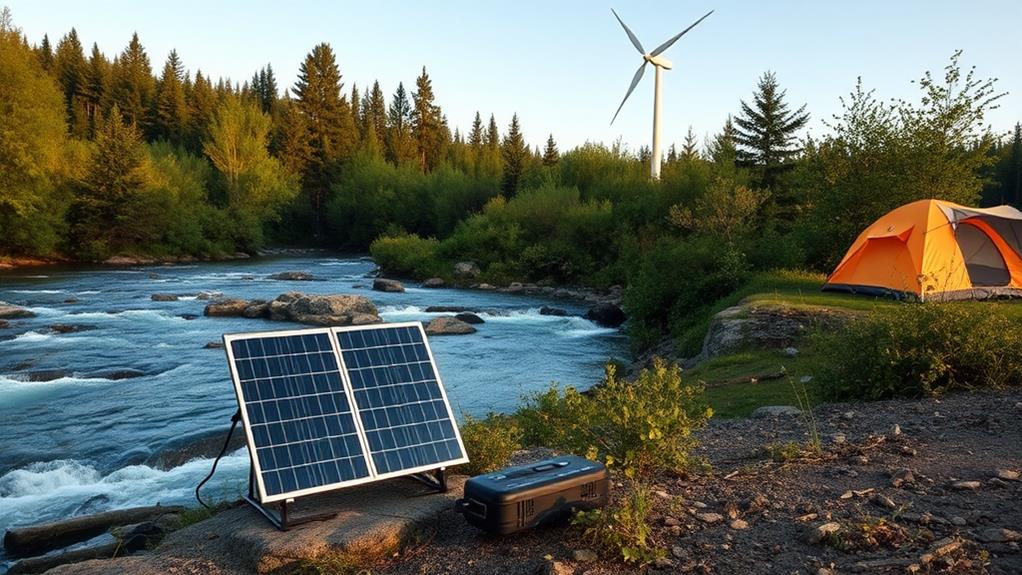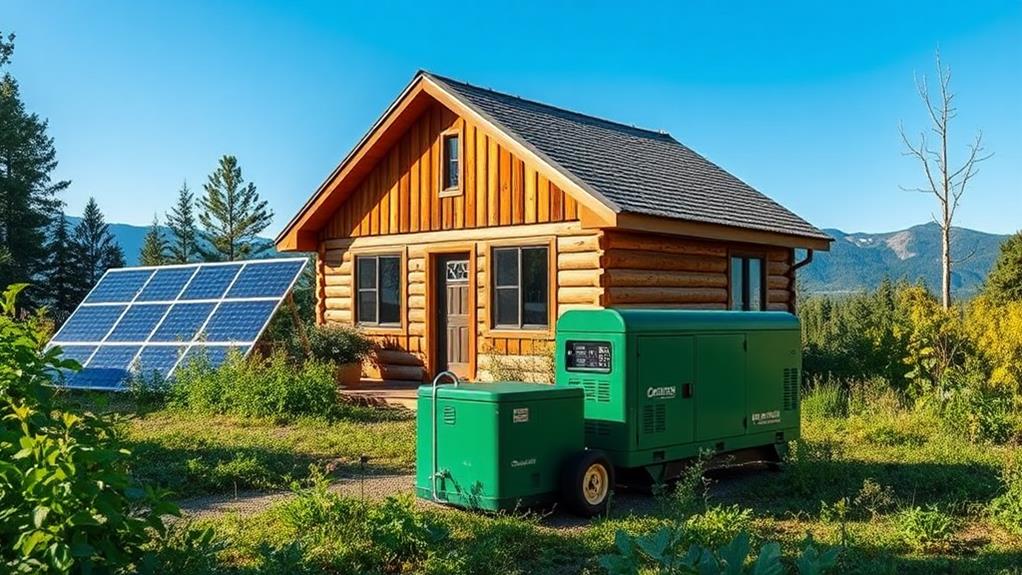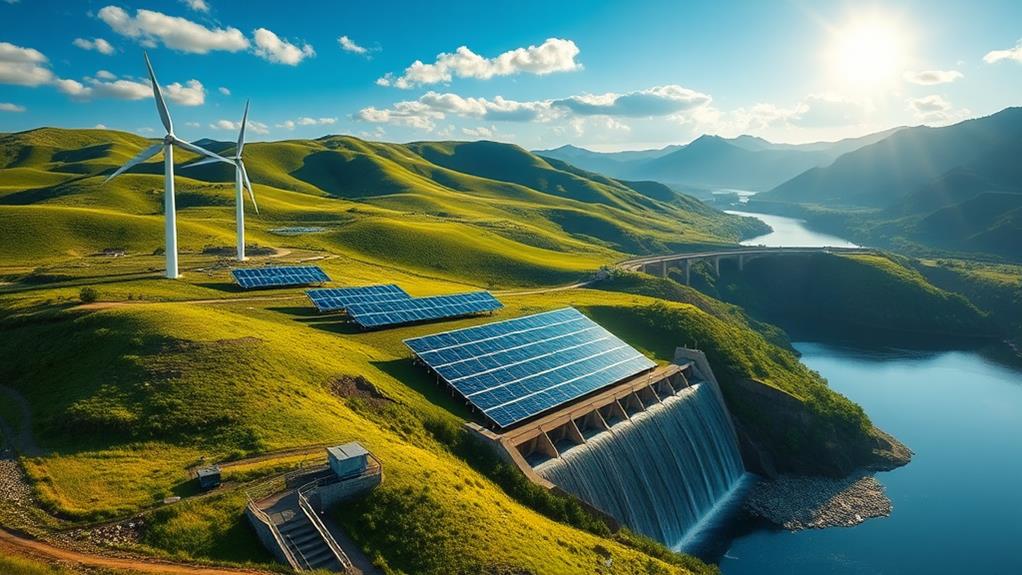We can consider five green backup power options for sustainable living: solar generators, which utilize solar panels and battery banks to provide reliable, eco-friendly power; wind turbines that convert kinetic energy into electricity, ideal for open spaces; hydrogen fuel cells that produce electricity from hydrogen gas, contributing to long-term storage solutions; wave energy generators, which harness ocean wave energy and hold significant potential according to U.S. estimates; and battery backup systems, particularly lithium-ion types that efficiently store renewable energy. Each option not only empowers us during outages but also aligns with our commitment to sustainability, leading us to further insights.
Key Takeaways
- Solar Generators provide eco-friendly backup power by harnessing solar energy, ensuring reliability during outages with low maintenance needs.
- Wind Turbines convert wind energy into electricity, making them ideal for large spaces and contributing to a significant reduction in carbon footprint.
- Hydrogen Fuel Cells offer long-term electricity storage, using hydrogen from renewable sources, aligning with carbon-free energy generation goals.
- Wave Energy Generators utilize ocean wave kinetic energy for electricity, with significant potential for coastal regions and ongoing research to improve efficiency.
- Battery Backup Systems store energy from renewable sources, ensuring power availability during outages and promoting energy independence and sustainable living.
Solar Generators
Solar generators are increasingly becoming our go-to solution for backup power. These innovative systems harness solar energy, a clean and renewable energy source, to provide reliable electricity during power outages. By utilizing solar panels in conjunction with energy storage solutions, such as battery banks, we guarantee that we have a continuous power supply, even at night or during cloudy conditions. Solar generators are not only eco-friendly backup power options, but they also boast low maintenance requirements due to fewer moving parts and no need for fuel refills. As we aim to reduce our carbon footprint, the compact design and versatility of solar generators make them perfect for home use, camping, or emergency situations, allowing us to efficiently tap into energy from the sun.
Wind Turbines
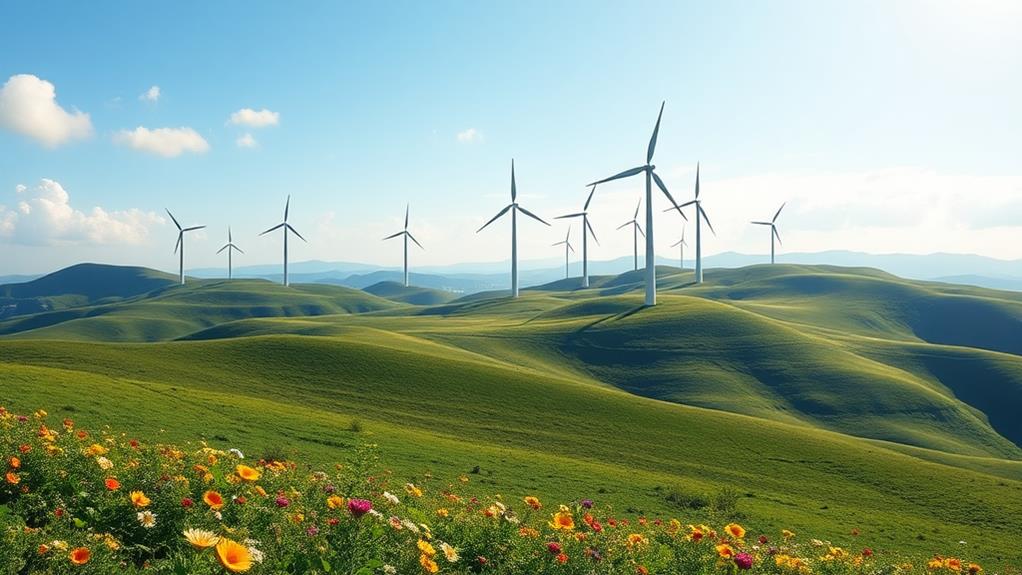
Harnessing the power of the wind offers us a promising avenue for sustainable backup energy. Wind turbines effectively convert kinetic energy from wind into electrical energy, representing a significant renewable energy source that can diminish our carbon footprint. These turbines thrive in large outdoor spaces with consistent wind, enhancing our energy independence, especially in off-grid living scenarios. Additionally, when paired with solar power systems, they create a hybrid solution that optimizes energy generation across varying weather conditions. Battery generators can be integrated for quiet operation, ensuring compact storage and efficient use of generated electricity. The energy produced can be stored for hours or days, providing reliable backup power during outages or in remote locations, reinforcing our commitment to sustainable power.
Hydrogen Fuel Cells

As we explore additional green backup power options, hydrogen fuel cells emerge as an innovative solution. These systems convert hydrogen gas into electricity through chemical reactions, producing only water and heat as byproducts, which makes them a clean energy alternative. Their ability to store electricity long-term positions them as ideal generators for residential energy systems and critical facilities. Moreover, hydrogen can be produced from renewable sources via electrolysis, facilitating sustainable generation without fossil fuel reliance. Currently, 56 large-scale units operate in the U.S., underscoring their increasing viability. The adoption of hydrogen fuel cells aligns with global efforts to achieve carbon-free energy generation, greatly reducing greenhouse gas emissions and promoting a cleaner environment for all.
Wave Energy Generators

Wave energy generators offer a promising avenue for sustainable electricity production, tapping into the kinetic energy of ocean waves to create power. These systems leverage technologies like triboelectric nanogenerators (TENGs) to convert wave motion into usable electricity, operating efficiently in various marine environments. As a renewable energy source, wave energy stands out for its reliability and abundance, particularly in coastal regions where ocean waves are consistently present. The U.S. Department of Energy estimates that wave energy could generate 1,200 terawatt-hours of energy annually, potentially meeting one-third of the nation's electricity needs. While still in early development stages, ongoing research aims to enhance efficiency, reduce costs, and improve energy storage solutions, ensuring wave energy becomes a viable component of our green energy future and sustainable living practices.
Battery Backup Systems
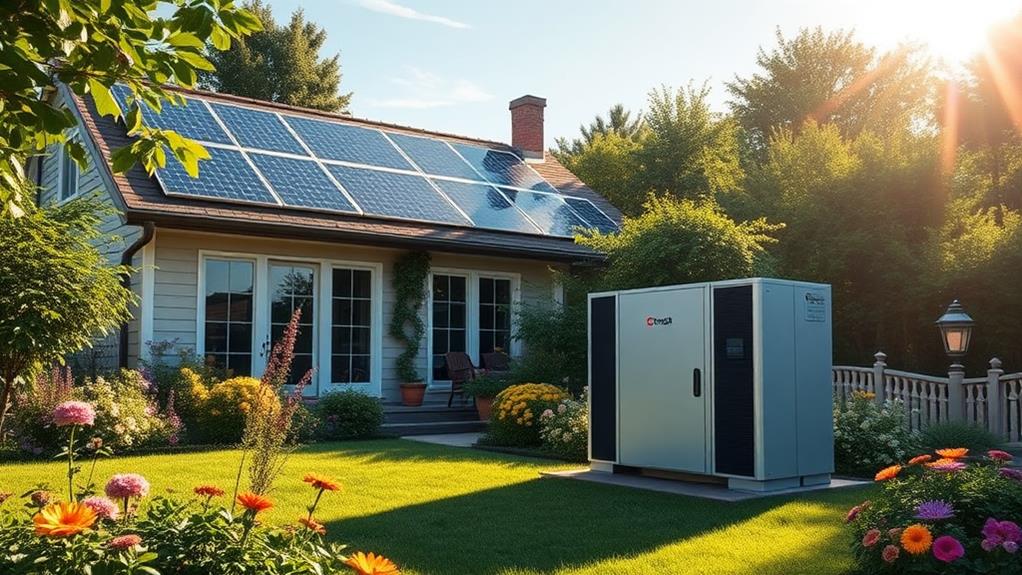
In our pursuit of sustainable energy solutions, battery backup systems are gaining significant attention. These systems, particularly lithium-ion batteries, stand out for their efficiency and low maintenance, allowing us to store energy from renewable sources like solar panels. This capability guarantees power availability during outages, promoting our collective energy independence. Furthermore, deep-cycle batteries are ideal for backup applications due to their design for prolonged discharges, although they require regular maintenance to guarantee reliability and performance. As we embrace smart home technologies, the integration of battery backup systems enhances energy management, optimizing usage during peak demand periods. Exploring these technologies not only empowers us but also strengthens our commitment to sustainable living and energy storage innovations.
Frequently Asked Questions
What Is the Most Sustainable Green Energy?
In the dance of nature, we find our rhythm in sustainable technology. Whether it's solar power, wind energy, or geothermal heating, each renewable resource helps us shrink our carbon footprint and embrace energy efficiency together.
What Is the Most Environmentally Friendly Power Source?
When we think about the most environmentally friendly power sources, we can't ignore solar panels, wind turbines, and hydroelectric power. Together, they empower our sustainable agriculture, electric vehicles, and green building initiatives, creating a cleaner future for all.
What Are Three Renewable Power Sources We Can Use to Be Sustainable?
We can embrace sustainability through solar energy, wind power, and hydroelectric plants. By utilizing community solar and energy storage, we'll access microgrids benefits and renewable incentives, creating a collective path toward a greener future together.
What Are 4 Sustainable Energy Sources?
When we think about sustainable energy sources, we've got solar panels, wind turbines, hydroelectric power, and geothermal energy. Together, they promote energy efficiency, support electric vehicles, and enhance energy storage through microgrid systems, fostering sustainable practices.

